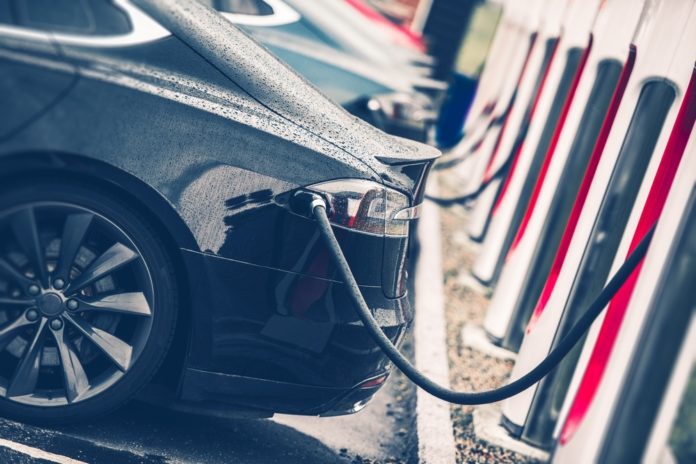Key Takeaways:
- Eliminating electric vehicle incentives in 2025 collapsed U.S. investment in EV factories.
- Fewer electric vehicles means slower cuts in transportation emissions.
- More electric vehicles charging leads to more clean power plants like solar and wind.
- Cutting incentives not only harms EV adoption but also delays cleaner electricity.
Electric Vehicles Driving Both Transport and Power Clean Up
Electric vehicles are simple to engineer and emit almost no tailpipe pollution. When you charge them with clean energy, they help cut overall greenhouse gases. Yet in 2025, U.S. lawmakers removed most incentives for electric vehicles. As a result, new battery factories and material plants stopped being built. This rollback threatens progress on two big fronts: cleaner transportation and cleaner electricity.
Why Electric Vehicles Matter
Electric vehicles matter because they do two jobs at once. First, they replace gas cars and trucks that belch carbon dioxide from their tailpipes. Second, their charging needs spark the building of solar, wind, and battery storage farms. Therefore, electric vehicles can cut emissions in both the vehicles we drive and the power plants that serve our homes.
How Incentives Sparked U.S. Investment in Electric Vehicle Factories
Before 2022, U.S. electric vehicle adoption lagged far behind China’s. Then Congress passed the Inflation Reduction Act. It offered big tax credits to automakers and buyers. It also encouraged building batteries and processing materials in America. Because of those incentives, hundreds of new battery and material facilities sprouted across the country. Region by region, states competed to host manufacturing sites and create clean energy jobs.
Dropping Incentives and Investment Collapse
In 2025, President Trump signed the One Big Beautiful Bill Act. It wiped out most of the earlier EV incentives. Instantly, planned and ongoing investments froze. Factory projects were delayed or canceled. Worker hiring slowed. Without a stable policy, automakers and suppliers pulled back. Consequently, the U.S. lost momentum in this strategic industry.
Electric Vehicles Fuel a Cleaner Power Sector
You might wonder how electric vehicles affect the electricity grid. Research from Carnegie Mellon University shows that adding EV charging demand leads to more clean energy capacity. Here is why. When utilities need to meet higher electricity use, they build new power plants. Since solar and wind now cost less than coal or oil, new plants tend to be renewable. Once solar panels and wind turbines are in place, they are cheap to run. They displace older, dirtier generators even when EVs aren’t charging. Thus electric vehicles indirectly push the power mix toward cleaner sources.
A Virtuous Cycle for Emissions Reductions
With more EVs on the road:
• Demand for electricity rises.
• Utilities add solar, wind, battery storage, and sometimes natural gas.
• Renewables run first because they have zero fuel cost.
• Fossil fuel plants back down, cutting overall emissions.
This cycle makes electric vehicles an even stronger climate tool than just replacing gas engines. As battery prices keep falling and driving ranges improve, electric vehicles become more appealing. Their growth pulls in cleaner power at the same time.
What Happens Next?
Gas engines will not last forever. Cheap oil will run out one day. In the meantime, automakers around the world keep investing in electric vehicles. Consumers buy more of them as prices drop. Even in regions without strong government rules, market forces drive EV growth. The U.S. government can choose to lead, follow, or resist this global trend. Rolling back incentives now means:
• Higher carbon emissions from cars and power plants.
• Missing jobs and investments in a cutting-edge industry.
• Weakening U.S. strategic leadership in future technology.
Without electric vehicle incentives, the pace of clean energy progress slows. Transportation and electricity remain the two biggest sources of U.S. emissions. We need both to shrink fast to avoid the worst climate impacts.
Frequently Asked Questions
How do electric vehicles help cut power plant emissions?
When charging demand rises, utilities build cheap renewable power first. Solar, wind, and storage replace older fossil fuel plants, so overall emissions drop.
Why did U.S. investment in EV factories collapse in 2025?
Lawmakers removed most Inflation Reduction Act incentives under the One Big Beautiful Bill Act. Without tax credits and loan support, investors paused projects.
Are electric vehicles really cleaner than gas cars today?
Yes. Even on a grid that still uses coal or natural gas, electric vehicles usually beat most gasoline cars on total emissions. The cleaner the grid, the stronger the EV advantage.
Can the U.S. catch up to China in electric vehicle production again?
With stable policy and clear incentives, the U.S. can attract factories and supply chains. Consistent support for electric vehicles and clean energy investments boosts competitiveness.

